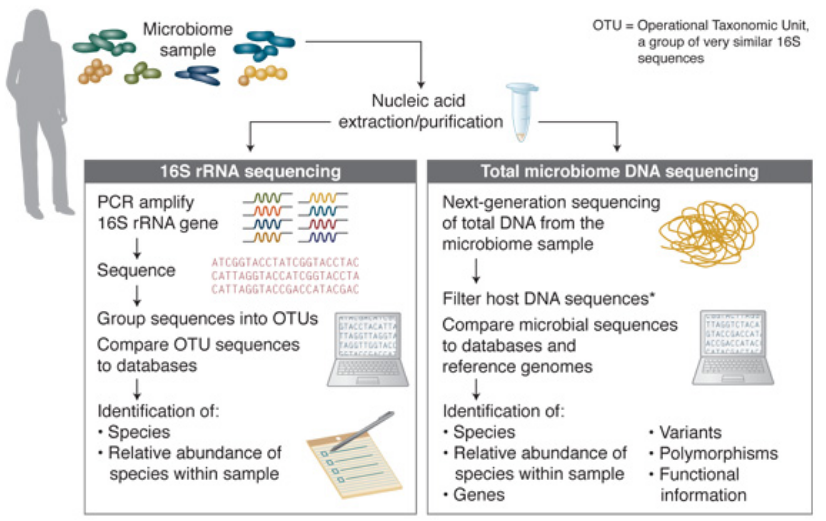
We perform analysis on DNA sequences, supported by molecular laboratories, to get the bacteria composition of microbiomes and with other statistical analysis to discover clusters or patterns that could be index of dysbiosis in our system
Human Gut Microbiome ANAlysis
What is Microbiome?
– Bacteria composition of a micro-bioecosystem
– It can change continuosly (in humans it changes a lot during our first 2 years of life)
– It’s greatly affected by our diet and medicines that we assume (antibiotic, ecc..)
– In our body human cells / microbiome cells with a proportion 1.0 : 1.3
Why is it so important for Human Health?
– It affects our health, mood, weight, food cravings, metabolism
– evolutionary process of symbiosis that took thousands of years (without bacteria we can’t live)
– the bacterial composition is also a clue to recognize pathologies (not only the bowel ones: autism, parkinson, cancer and others)
– evolutionary process of symbiosis that took thousands of years (different populations have
different microbiomedepending on their diet, the enviroment in which they live, ther habits).
Why is it a new field?
– Thanks to recent discovers in molecular bio analysis (PCR for DNA) we are able now to find, classifying and discover also new kind of bacteria, impossible to find before by traditional lab methods
What we can understand analyzing microbiome?
– healtness/fitness conditions of a person (metabolism, weight. mood, ecc..)
– cluster group regional/geographic populations
– discover patterns in bacteria composition related to pathologies or dysbiosis.
We still don’t have a clear idea what characterizes a healthy gut microbiota.
But studies that compare healthy people to those with different chronic diseases tend to find that the healthy people show greater gut microbiota diversity.
In general an ecosystem (like the gut microbiome) with many (diverse) components is more robust and resilient.
It doesn’t depend on how many microorganisms are, but how many kinds and how they’re distributed.
Some common measurements of the diversity in biology:
– Richness: measure of the number of species
– Evenness: measure of how evenly individuals are distributed
– Shannon index
